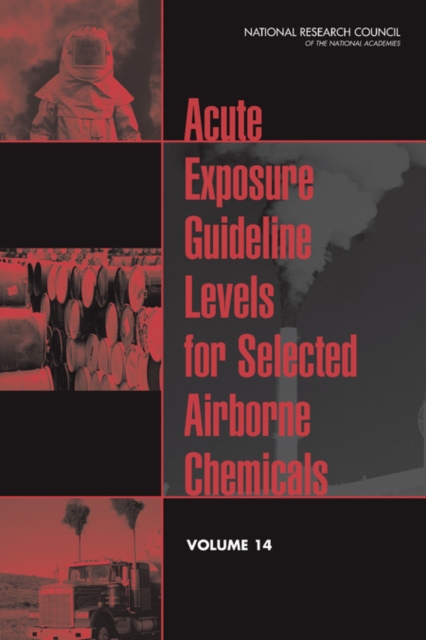
Acute Exposure Guideline Levels for Selected Airborne Chemicals : Volume 14 Paperback / softback
by National Research Council, Division on Earth and Life Studies, Board on Environmental Studies and Toxicology, Committee on Toxicology, Committee on Acute Exposure Guideline Levels
Paperback / softback
- Information
Description
Extremely hazardous substances (EHSs) can be released accidentally as a result of result of chemical spills, industrial explosions, fires, or accidents involving railroad cars and trucks transporting EHSs.
Workers and residents in communities surrounding industrial facilities where EHSs are manufactured, used, or stored and in communities along the nation's railways and highways are potentially at risk of being exposed to airborne EHSs during accidental releases or intentional releases by terrorists.
Pursuant to the Superfund Amendments and Reauthorization Act of 1986, the U.S.
Environmental Protection Agency (EPA) has identified approximately 400 EHSs on the basis of acute lethality data in rodents. As part of its efforts to develop acute exposure guideline levels for EHSs, EPA and the Agency for Toxic Substances and Disease Registry (ATSDR) in 1991 requested that the National Research Council (NRC) develop guidelines for establishing such levels.
In response to that request, the NRC published Guidelines for Developing Community Emergency Exposure Levels for Hazardous Substances in 1993.
Subsequently, Standard Operating Procedures for Developing Acute Exposure Guideline Levels for Hazardous Substances was published in 2001, providing updated procedures, methodologies, and other guidelines used by the National Advisory Committee (NAC) on Acute Exposure Guideline Levels for Hazardous Substances and the Committee on Acute Exposure Guideline Levels (AEGLs) in developing the AEGL values. Using the 1993 and 2001 NRC guidelines reports, the NAC-consisting of members from EPA, the Department of Defense (DOD), the Department of Energy (DOE), the Department of Transportation (DOT), other federal and state governments, the chemical industry, academia, and other organizations from the private sector-has developed AEGLs for more than 270 EHSs.
In 1998, EPA and DOD requested that the NRC independently review the AEGLs developed by NAC.
In response to that request, the NRC organized within its Committee on Toxicology (COT) the Committee on Acute Exposure Guideline Levels, which prepared this report.
This report is the fourteenth volume in that series.
Acute Exposure Guideline Levels for Selected Airborne Chemicals: Volume 14 summarizes the committee's conclusions and recommendations. Table of ContentsFront MatterAcute Exposure Guideline Levels for Selected Airborne ChemicalsVolume 14National Research Council Committee Review of Acute ExposureGuideline Levels of Selected Airborne ChemicalsAppendixes1 Agent BZ (3-Quinuclidinyl Benzilate) Acute Exposure GuidelineLevels2 Ethyl Phosphorodichloridate Acute Exposure Guideline Levels3 n-Hexane Acute Exposure Guideline Levels4 Methanesulfonyl Chloride Acute Exposure Guideline Levels5 Nitric Acid Acute Exposure Guideline Levels6 Propargyl Alcohol Acute Exposure Guideline Levels7 Vinyl Acetate Acute Exposure Guideline Levels
Information
-
Available to Order - This title is available to order, with delivery expected within 2 weeks
- Format:Paperback / softback
- Pages:290 pages
- Publisher:National Academies Press
- Publication Date:26/05/2013
- Category:
- ISBN:9780309283083
Other Formats
- PDF from £2.84
Information
-
Available to Order - This title is available to order, with delivery expected within 2 weeks
- Format:Paperback / softback
- Pages:290 pages
- Publisher:National Academies Press
- Publication Date:26/05/2013
- Category:
- ISBN:9780309283083